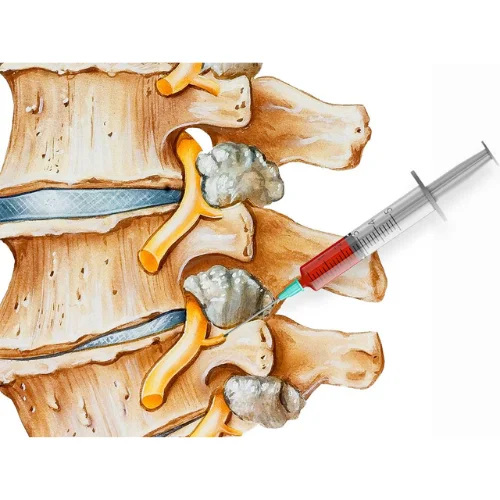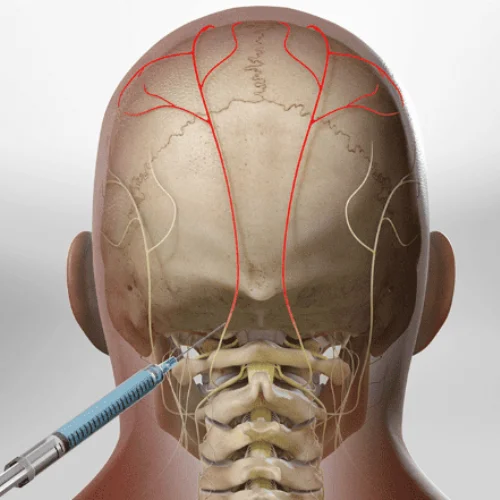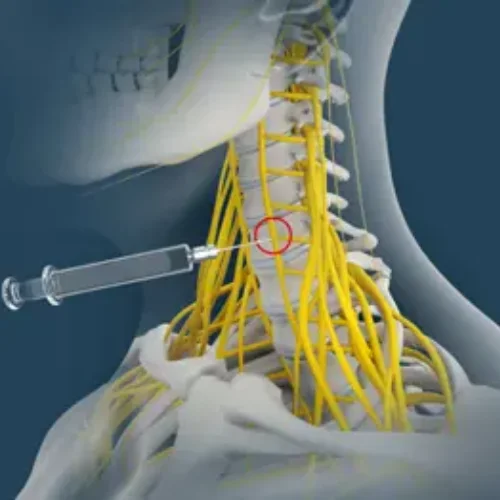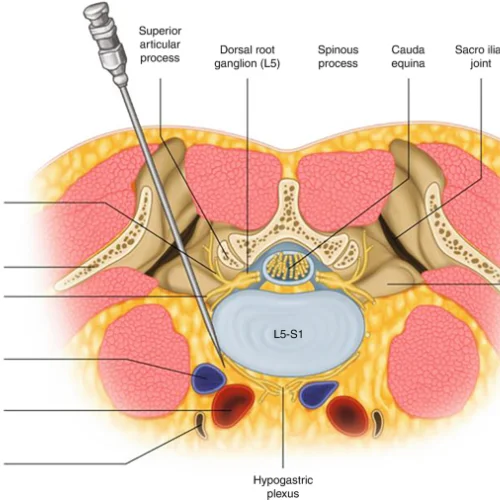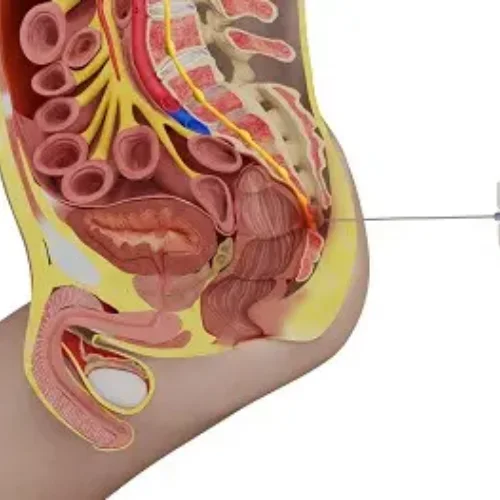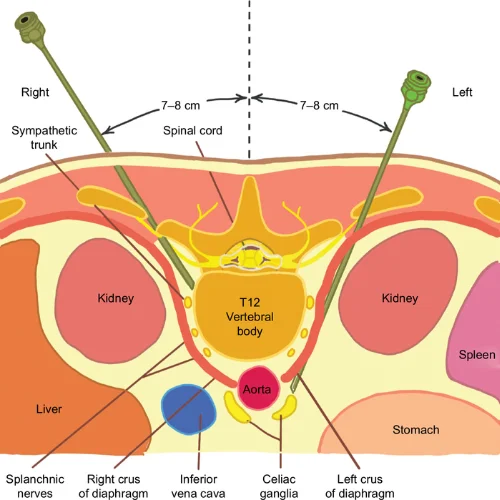Working Time
Book Appointment
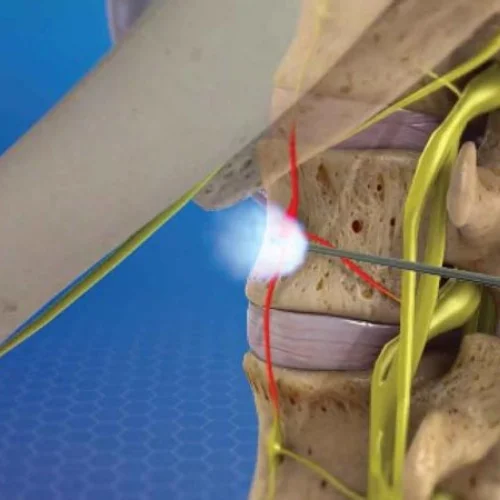
A sympathetic nerve block is a minimally invasive procedure used to diagnose and manage pain caused by dysfunction or injury to the sympathetic nervous system. The sympathetic nervous system is responsible for regulating involuntary bodily functions, including blood flow, temperature, and pain perception. Sympathetic nerve blocks involve injecting local anaesthetic or medication near the sympathetic nerves to block pain signals and Dr. Tushar's clinic symptoms. Conditions Treated with Sympathetic Nerve Block: Sympathetic nerve blocks may be used to manage various chronic pain conditions, including: · Complex regional pain syndrome (CRPS) · Peripheral neuropathy · Chronic abdominal or pelvic pain · Pain associated with vascular disorders · Phantom limb pain Benefits of Sympathetic Nerve Block:
- Benefits of Sympathetic Nerve Blocks:
- Targeted Pain Relief: Blocks sympathetic nerve activity, providing targeted pain relief in the specific area served by the blocked nerves.
- Diagnostic Tool: Helps diagnose the source of pain by temporarily interrupting nerve signals, allowing healthcare professionals to assess the role of the sympathetic nervous system in the pain experience.
- Reduced Symptoms: Can reduce pain, swelling, and other symptoms associated with sympathetic nervous system dysfunction.
- Improved Mobility: May improve mobility and function in affected limbs or areas of the body by reducing pain and inflammation.
- Minimally Invasive: The procedure is minimally invasive with a low risk of complications compared to major surgery.
Stellate ganglion block (SGB) is a procedure used to diagnose or treat various conditions, primarily those involving the sympathetic nervous system in the head, neck, and upper chest. Here's an overview:
If you are experiencing symptoms that may benefit from a stellate ganglion block, it's important to consult with a healthcare professional for an accurate diagnosis and appropriate treatment plan. Dr. Tushar can provide expert guidance and help you understand the potential benefits and risks of SGB for your specific situation.


